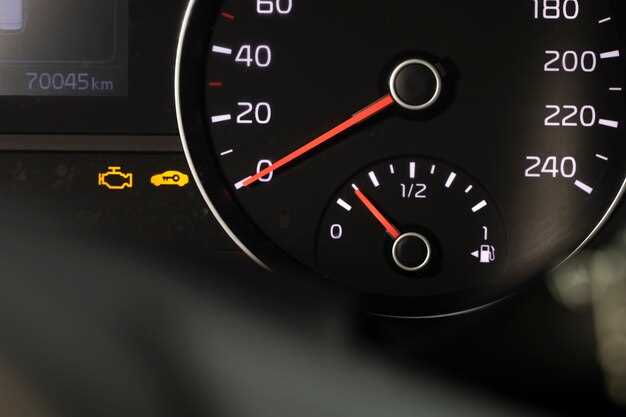
Understanding the myriad warning lights on your car’s dashboard can be a daunting task for any driver. Among these indicators, charger warning lights play a critical role in alerting you to potential issues with your vehicle’s electrical system. These lights are more than just an inconvenience; they often signal underlying problems that, if left unaddressed, could lead to more severe damage or even complete failure of the charging system.
When a charger warning light is activated, it is essential to recognize what it means. Each light corresponds to specific error codes that provide vital information about the state of your battery and charging system. Familiarizing yourself with these codes can empower you to take the necessary steps before your vehicle encounters a more serious malfunction. Ignoring these indicators might not only risk your safety but could also result in costly repairs in the future.
This article will delve into the significance of various charger warning lights, helping you decode the error messages associated with your car’s charger system. By the end, you’ll have a clear understanding of what these warning lights signify and how to respond effectively, ensuring that your vehicle remains in optimal condition and ready for the road ahead.
Identifying Common Charger Warning Lights on Your Dashboard
Your car’s dashboard is equipped with various warning lights that convey important information about the vehicle’s health and performance. One of the critical systems monitored is the charging system, which ensures that your battery remains charged and functional. Understanding these warning lights can help you address potential issues before they escalate.
Battery Warning Light: This light typically resembles a battery icon or may include the word “BATT.” When illuminated, it indicates that there may be a problem with your battery or the charging system. Possible causes include a faulty alternator, loose battery cables, or a failing battery itself. If this light activates while driving, it’s advisable to pull over and assess the situation.
Alternator Warning Light: Often depicted as a circle with a plus and minus sign inside, this light indicates that the alternator is not properly charging the battery. The alternator is responsible for converting mechanical energy into electrical energy, and if it fails, the battery will not receive the charge it needs. If you see this light, it may be necessary to check the alternator and connections immediately.
Check Engine Light: This light can signal a variety of issues, including problems with the charging system. It may trigger if the battery voltage is too low or if the electrical system is under strain. Using diagnostic codes can help pinpoint the exact issue causing this warning light to activate. Connecting an OBD-II scanner can provide specific trouble codes related to the charging system.
Battery Temperature Warning Light: Some vehicles are equipped with a temperature gauge for the battery. If this light appears, it indicates that the battery is either overheating or too cold. Extreme temperatures can affect battery performance and longevity. It is crucial to assess the battery’s condition and the surrounding environment when this warning light is present.
Recognizing these common charger warning lights on your dashboard and understanding their implications is vital for vehicle maintenance. Regularly monitoring these indicators can lead to proactive measures, ensuring your car remains reliable and safe to drive.
Decoding Error Codes Related to Charging System Malfunctions

When your vehicle’s charging system encounters issues, your dashboard will often display specific error codes to help identify the problem. Understanding these codes is essential for effective troubleshooting and ensuring your car remains operational. The following are common codes related to charging system malfunctions:
Code P0562: This code indicates a system voltage low condition. It suggests that the battery or alternator may be failing to provide adequate voltage, leading to potential starting issues and electrical system malfunctions.
Code P0563: This code signifies a system voltage high condition. It could point to overcharging from the alternator, which may damage the battery and other electrical components in the vehicle.
Code P0625: This pertains to the generator or alternator, indicating issues with the field control circuit. If this code appears, it may suggest a faulty alternator that requires inspection or replacement.
Code P0705: Associated with the transmission range sensor circuit, this code can affect the charging system by disrupting the communication between the transmission and engine control unit, possibly leading to further electrical complications.
Code P0480: This code refers to cooling fan control circuit issues, which can indirectly affect the charging system by causing overheating, often leading to alternator inefficiency.
To effectively address charging system malfunctions, a thorough understanding of these dashboard codes will guide you to the necessary repairs. Always consult a professional mechanic for an accurate diagnosis and resolution of any issues indicated by these error codes.
Steps to Take When a Charger Warning Light Activates

When a charger warning light activates on your vehicle’s dashboard, it’s crucial to respond promptly to avoid potential damage to the battery or the charging system. Follow these steps to address the issue effectively.
First, safely pull over to the side of the road. Continuing to drive can lead to further complications, including a complete battery failure. Once you’ve stopped, turn off the engine and remove the keys from the ignition.
Next, consult your owner’s manual to identify the specific warning light and any associated error codes. Different vehicles may have varying interpretations of warning indicators, so understanding your particular system is essential.
After identifying the warning light, visually inspect the charging system components. Look for any loose connections, frayed wires, or damaged parts, such as the alternator or battery terminals. A simple inspection can sometimes reveal the source of the problem.
If no visible issues are apparent, it’s advisable to check the battery voltage with a multimeter. Ensure it falls within the normal range – typically between 12.4 and 12.7 volts when the engine is off. If the voltage is low, the battery may require charging or replacement.
If the warning light persists or if error codes indicate a more serious issue, consider seeking professional assistance. A certified technician can conduct a thorough diagnostic to pinpoint the root cause and implement necessary repairs.
Finally, after resolving the issue, clear any error codes and reset the warning light if your vehicle allows for it. This step ensures that you can accurately monitor the charging system’s functionality in the future.




